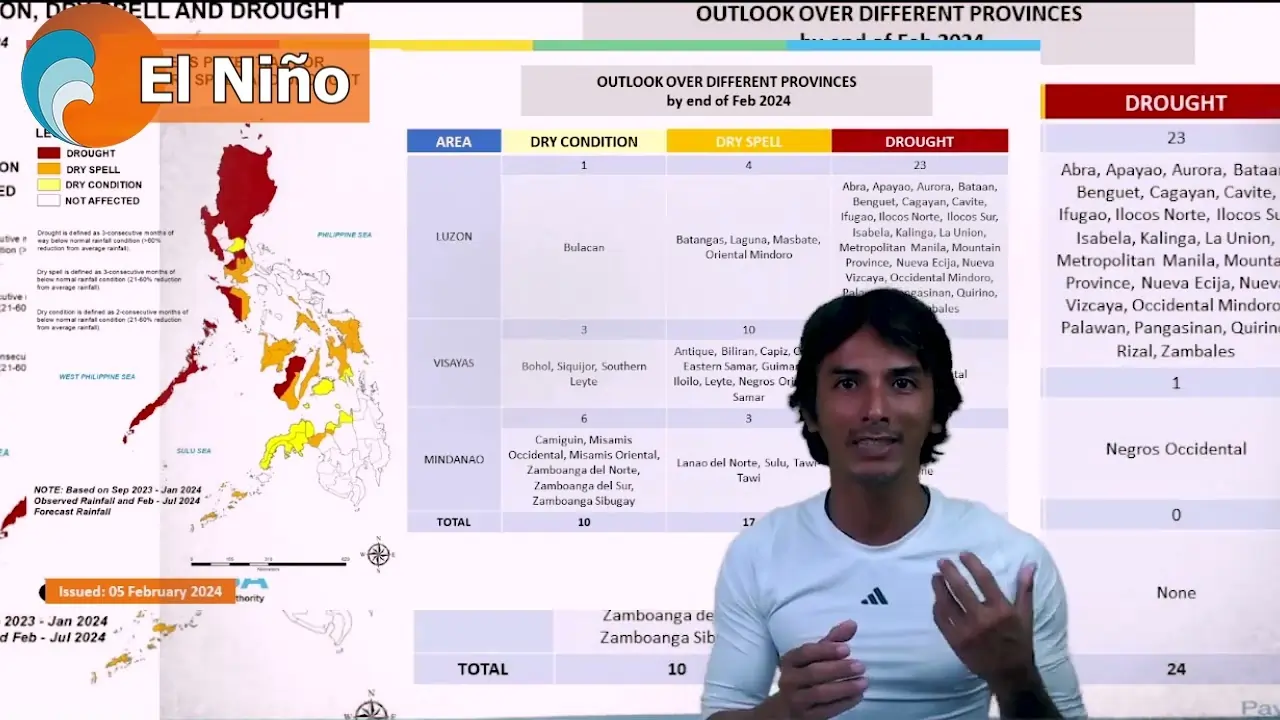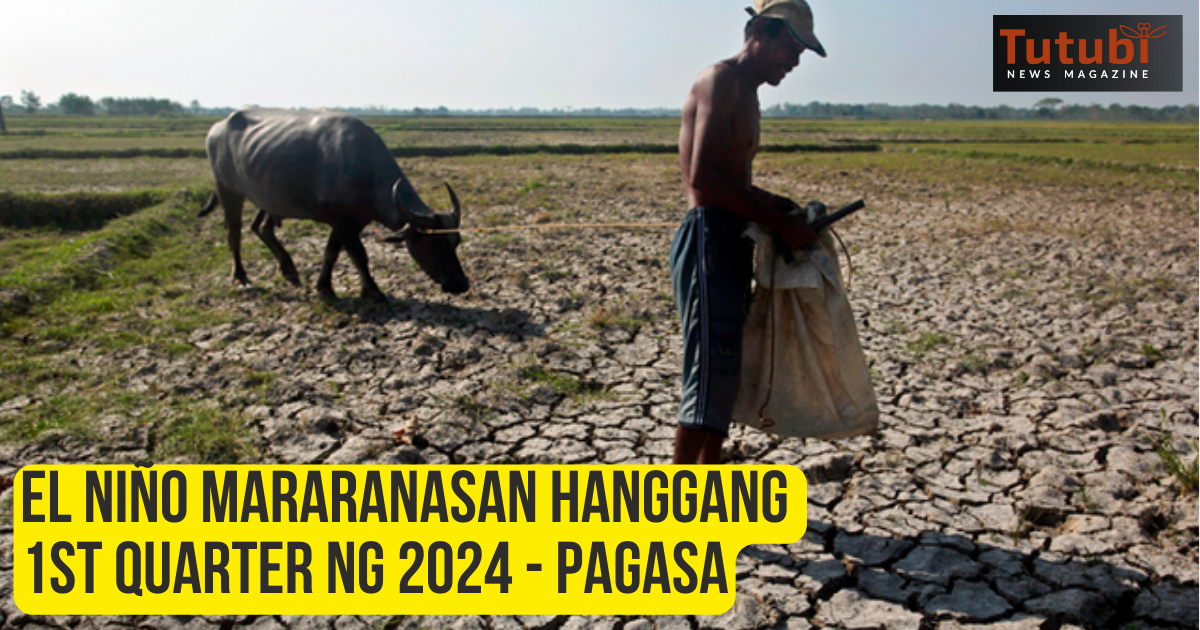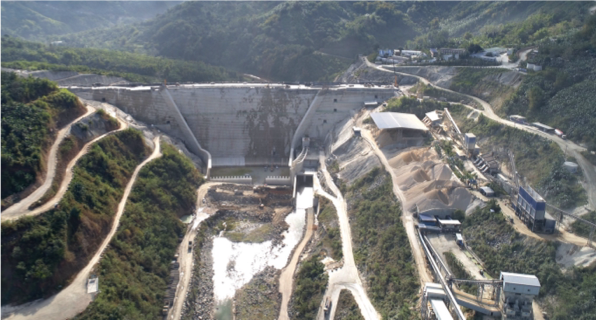EL NIÑO 2024 | Most Devastating Impact to the Lives of Filipino

The Anticipated El Niño event of 2024 and its profound impact on the lives of Filipinos.
Read more be informative about this trends.
Table of Contents
Introduction
The Philippines is particularly prone to El Niño due to its location in the exotic Pacific.
Historically, El Niño occasions have created severe droughts, causing plant failings, water lacks, and food instability.
In 1998, a specifically strong El Niño 2024 resulted in extensive appetite and financial hardship in the Philippines.
Key Takeaways
- Explanation of El Niño sensation
- Reasons and systems behind El Niño
- Historic incidents and influences
- Significance of comprehending El Niño’s.
El Niño 2024 may require and its potential influences:
Interpretation of El Niño: El Niño is identified by warming sea surface temperature levels in the central and eastern Pacific Ocean. This warming interferes with everyday ocean-atmosphere interactions, leading to a disruption in the global climate system. This disruption can manifest as extensive climate anomalies worldwide, such as increased rainfall in some regions and drought in others, as we’ve seen in past El Niño events.
Anticipated Effects in the Philippines
–Drought Problems: El Niño often brings decreased rainfall to the Philippines, causing dry spells. This can influence agriculture, water, and hydroelectric power generation.
–Boosted Temperature Levels: Warmer-than-average temperatures prevail during El Niño, aggravating warm stress and anxiety and affecting public health, especially for prone populations.
–Effect on Agriculture: Minimized rains and higher temperatures can hurt plant yields, influencing food production and potentially resulting in shortages and boosted rates of agricultural commodities.
–Water Supply: Reduced rainfall can also reduce water availability for residential, farming, and industrial use.
–Boosted Risk of Wildfires: Drier conditions can enhance the threat of wildfires, presenting risks to ecosystems and human negotiations.
Projections and Keeping track of El Niño 2024
- Scientists monitor several indications to predict the possibility of an El Niño event, including sea surface temperature levels, atmospheric pressure patterns, and wind patterns.
- Projection designs supply forecasts on the stamina and duration of El Niño problems, aiding stakeholders in planning for possible impacts.
Response and Readiness
- Government companies and local authorities can utilize forecasts to create reduction and adaptation approaches.
- Actions might consist of water preservation actions, support for affected farmers, public wellness interventions to manage heat-related illnesses, and fire prevention initiatives.
International Partnership
- Offered the international ramifications of El Niño, worldwide organizations work together to share information and coordinate feedback initiatives.
- Early warning systems help prone countries prepare for and respond to climate-related events like El Niño.
El Niño 2024: Damaging Impact on Filipino Agriculture
In the Philippines, where farming is a keystone of the economy and a source of income, the impending specter of El Niño 2024 poses substantial difficulties.
This climate phenomenon, defined by warmer-than-average sea surface area temperatures in the Pacific Sea, is prepared to disrupt rain patterns and cause dry spell problems.
Let’s explore how El Niño’s impact on agriculture could profoundly influence crop manufacturing, country neighborhoods, and food safety in the Philippines.
Results on Crop Manufacturing

Minimized Rainfall and Dry Spell Conditions
One of the trademark results of El Niño is diminished rainfall, resulting in prolonged durations of drought throughout affected areas. The absence of precipitation can swiftly change abundant landscapes into dry stretches, endangering plant yields and farming efficiency.
Influence On Significant Crops (Rice, Corn, etc).
Rice and corn, staples of Filipino food and critical parts of the nation’s farming result, are specifically vulnerable to the unfavorable effects of El Niño. These plants need appropriate water for development and advancement, making them susceptible to producing losses throughout extended dry spells.
Rice paddies, usually immersed in water, can deal with water shortages during El Niño, impacting the germination and growth of rice plants. Similarly, corn, an essential animal feed and food resource, may experience stunted development and decreased harvests under water-stressed problems.
Resources Challenges
Farmers and Country Communities Impacted
Smallholder farmers and country neighborhoods bear the impact of El Niño’s effect on agriculture. Many farmers depend on rain-fed watering for crop farming, and lowered rains can interrupt planting schedules and crop cycles.
Farmers might need more water to support their plants to maturity, leading to economic challenges and food insecurity.
Rural areas, heavily depending on agriculture for revenue and food, face enhanced susceptibility throughout the El Niño periods.
Decreasing crop yields can reduce household incomes, forcing households to seek different sources of income or rely on external help to satisfy their fundamental requirements.
Food Security Worries
El Niño-induced disturbances in plant manufacturing pose considerable risks to food safety and security in the Philippines.
Rice and corn shortages can increase prices and limit accessibility to essential food items, greatly influencing low-income homes.
The causal sequences of lessened plant yields extend past staple crops, impacting the schedule and price of diverse food products.
Prone populations, including children and seniors, might experience enhanced malnutrition threats because of insufficient nutritional variety and lessened accessibility to nourishing foods.
Dealing with the Obstacles.
Alleviating the impact of El Niño on agriculture requires a multifaceted approach that integrates climate-resilient practices, technology adoption, and community-based techniques.
Water Monitoring: Reliable irrigation systems and rain harvesting techniques can enhance water use and reduce crop water tension during dry periods.
Crop Diversification: Encouraging farmers to diversify their plant portfolio can boost resilience to environmental irregularities. Drought-resistant plants and agroforestry techniques can buffer against the effects of El Niño.
Early Warning Solutions: Enhancing very early warning systems allows timely treatments and readiness actions. Supplying workable information to farmers empowers them to make informed decisions about growing and source allowance.
Social Security Nets: Developing social safety nets and support devices can buffer prone neighborhoods from the economic shocks of El Niño-induced farming losses. Accessible credit score centers and insurance coverage programs can assist farmers in recuperating from plant failures and sustaining their incomes.
El Niño 2024: Damaging Impact on Filipino Agriculture
In the Philippines, where farming is a keystone of the economy and a source of income, the impending specter of El Niño 2024 poses substantial difficulties.
This climate phenomenon, defined by warmer-than-average sea surface area temperatures in the Pacific Sea, is prepared to disrupt rain patterns and cause dry spell problems.
Let’s explore how El Niño’s impact on agriculture could profoundly influence crop manufacturing, country neighborhoods, and food safety in the Philippines.
Results on Crop Manufacturing
Minimized Rainfall and Dry Spell Conditions
One of the trademark results of El Niño is diminished rainfall, resulting in prolonged durations of drought throughout affected areas.
The absence of precipitation can swiftly change abundant landscapes into dry stretches, endangering plant yields and farming efficiency.
Influence On Significant Crops (Rice, Corn, etc)
Rice and corn, staples of Filipino food and critical parts of the nation’s farming result, are specifically vulnerable to the unfavorable effects of El Niño.
These plants need appropriate water for development and advancement, making them susceptible to producing losses throughout extended dry spells.
Rice paddies, usually immersed in water, can deal with water shortages during El Niño, impacting the germination and growth of rice plants. Similarly, corn, an essential animal feed and food resource, may experience stunted development and decreased harvests under water-stressed problems.
Resources Challenges
Farmers and Country Communities Impacted
Smallholder farmers and country neighborhoods bear the impact of El Niño’s effect on agriculture.
Many farmers depend on rain-fed watering for crop farming, and lowered rains can interrupt planting schedules and crop cycles.
Farmers might need more water to support their plants to maturity, leading to economic challenges and food insecurity.
Rural areas, heavily depending on agriculture for revenue and food, face enhanced susceptibility throughout the El Niño periods.
Decreasing crop yields can reduce household incomes, forcing households to seek different sources of income or rely on external help to satisfy their fundamental requirements.
Food Security Worries
El Niño-induced disturbances in plant manufacturing pose considerable risks to food safety and security in the Philippines.
Rice and corn shortages can increase prices and limit accessibility to essential food items, greatly influencing low-income homes.
The causal sequences of lessened plant yields extend past staple crops, impacting the schedule and price of diverse food products.
Prone populations, including children and seniors, might experience enhanced malnutrition threats because of insufficient nutritional variety and lessened accessibility to nourishing foods.
Dealing with the Obstacles
Alleviating the impact of El Niño on agriculture requires a multifaceted approach that integrates climate-resilient practices, technology adoption, and community-based techniques.
Water Monitoring: Reliable irrigation systems and rain harvesting techniques can enhance water use and reduce crop water tension during dry periods.
Crop Diversification: Encouraging farmers to diversify their plant portfolio can boost resilience to environmental irregularities. Drought-resistant plants and agroforestry techniques can buffer against the effects of El Niño.
Early Warning Solutions: Enhancing very early warning systems allows timely treatments and readiness actions. Supplying workable information to farmers empowers them to make informed decisions about growing and source allowance.
Social Security Nets: Developing social safety nets and support devices can buffer prone neighborhoods from the economic shocks of El Niño-induced farming losses. Accessible credit scores centers and insurance coverage programs can assist farmers in recuperating from plant failures and sustaining their incomes.
El Niño 2024: Damaging Impact on Filipino Agriculture

In the Philippines, where farming is a keystone of the economy and a source of income, the impending specter of El Niño 2024 poses substantial difficulties.
This climate phenomenon, defined by warmer-than-average sea surface area temperatures in the Pacific Sea, is prepared to disrupt rain patterns and cause dry spell problems.
Let’s explore how El Niño’s impact on agriculture could profoundly influence crop manufacturing, country neighborhoods, and food safety in the Philippines.
Minimized Rainfall and Dry Spell Conditions
One of the trademark results of El Niño is diminished rainfall, resulting in prolonged durations of drought throughout affected areas.
The absence of precipitation can swiftly change abundant landscapes into dry stretches, endangering plant yields and farming efficiency.
Influence On Significant Crops (Rice, Corn, etc).
Rice and corn, staples of Filipino food and critical parts of the nation’s farming result, are specifically vulnerable to the unfavorable effects of El Niño.
These plants need appropriate water for development and advancement, making them susceptible to producing losses throughout extended dry spells.
Rice paddies, usually immersed in water, can deal with water shortages during El Niño, impacting the germination and growth of rice plants. Similarly, corn, an essential animal feed and food resource, may experience stunted development and decreased harvests under water-stressed problems.
Farmers and Country Communities Impacted
Smallholder farmers and country neighborhoods bear the impact of El Niño’s effect on agriculture.
Many farmers depend on rain-fed watering for crop farming, and lowered rains can interrupt planting schedules and crop cycles.
Farmers might need more water to support their plants to maturity, leading to economic challenges and food insecurity.
Rural areas, heavily depending on agriculture for revenue and food, face enhanced susceptibility throughout the El Niño 2024 periods.
Decreasing crop yields can reduce household incomes, forcing households to seek different sources of income or rely on external help to satisfy their fundamental requirements.
Food Security Worries
El Niño-induced disturbances in plant manufacturing pose considerable risks to food safety and security in the El Niño 2024 Philippines.
Rice and corn shortages can increase prices and limit accessibility to essential food items, greatly influencing low-income homes.
The causal sequences of lessened plant yields extend past staple crops, impacting the schedule and price of diverse food products.
Prone populations, including children and seniors, might experience enhanced malnutrition threats because of insufficient nutritional variety and lessened accessibility to nourishing foods.
Dealing with the Obstacles
Alleviating the impact of El Niño on agriculture requires a multifaceted approach that integrates climate-resilient practices, technology adoption, and community-based techniques El Niño 2024.
Water Monitoring: Reliable irrigation systems and rain harvesting techniques can enhance water use and reduce crop water tension during dry periods.
Crop Diversification: Encouraging farmers to diversify their plant portfolio can boost resilience to environmental irregularities. Drought-resistant plants and agroforestry techniques can buffer against the effects of El Niño.
Early Warning Solutions: Enhancing very early warning systems allows timely treatments and readiness actions. Supplying workable information to farmers empowers them to make informed decisions about growing and source allowance.
Social Security Nets: Developing social safety nets and support devices can buffer prone neighborhoods from the economic shocks of El Niño-induced farming losses. Accessible credit score centers and insurance coverage programs can assist farmers in recuperating from plant failures and sustaining their incomes El Niño 2024.
El Niño 2024: Influence On Filipino Lives
The year 2024 generated a powerful obstacle to the Philippines in the form of El Niño, an environmental phenomenon characterized by warmer-than-average sea surface temperatures in the Pacific Sea. This occasion had profound effects, especially on health, social implications, government action, and mitigation efforts.
Health And Wellness and Social Effects
Filipino neighborhoods’ health and wellness were significantly affected by the 2024 El Niño, causing numerous critical implications El Niño 2024:
Drought-Related Health Threats
Dehydration and Heat-Related Ailments: The long-term heat and absence of rainfall led to increased threats of dehydration, warm fatigue, and heatstroke amongst at-risk populations.
Food Insecurity and Lack Of Nutrition: Plant failings and decreased farming performance intensified food scarcity, causing malnutrition and enhanced vulnerability to illness El Niño 2024.
Social Disruptions
Variation and Movement: Families in greatly affected areas were displaced because of agricultural losses, with some seeking momentary moving into metropolitan facilities.
Economic Pressure: Reduced earnings from agriculture affected incomes, forcing families to seek alternative income sources.
Influence On At-Risk Teams
Kids and Elderly: Vulnerable populations, such as children and the elderly, face increased health and wellness threats due to minimal accessibility to food, water, and healthcare solutions.
El Niño 2024:Government Feedback and Reduction
The government’s action to the 2024 El Niño was meaningful in alleviating its impact and sustaining affected neighborhoods. Secret measures consisted of calamity preparedness and policy interventions:
Very Early Caution Equipment and Monitoring
Boosted Projecting: The federal government improved early warning systems to give timely signals on approaching dry spell conditions, allowing areas to prepare effectively.
Tracking of Water Resources: Normal tracking of water degrees in storage tanks and rivers enabled far better monitoring of water sources.
Emergency Situation Alleviation Efforts and Community Assistance
Food and Water Distribution: Government agencies coordinated the circulation of food and water to impacted areas, particularly in remote and vulnerable locations.
Healthcare Services: Mobile health facilities were released to provide vital treatment and assistance to locations with restricted access to healthcare centers.
El Niño 2024:Plan Interventions
Agricultural Subsidies and Assistance Programs.
Subsidies for Farmers: Financial backing and subsidies were supplied to farmers influenced by plant losses, allowing them to recover and sustain their resources.
Promotion of Drought-Resistant Crops: The government promoted the farming of drought-resistant crops to boost agricultural resilience against future El Niño events.
Water Preservation Initiatives and Facilities Advancement
Rainwater Collecting: We encouraged the adoption of rain harvesting systems to save water during dry spells.
Framework Investments: Investments were made in water storage facilities and irrigation systems to improve water management and alleviate the influence of future dry spells.
FAQs About El Niño 2024 Impact in the Philippines
What is El Niño, and how did it affect the Philippines in 2024?
El Niño is a climate phenomenon characterized by warmer-than-average sea surface temperatures in the Pacific Ocean, leading to altered weather patterns globally. In 2024, El Niño resulted in prolonged drought conditions in the Philippines, causing water shortages, crop failures, and heightened risks of heat-related illnesses.
How did El Niño impact agriculture and food security in the Philippines?
The 2024 El Niño significantly impacted agriculture in the Philippines, leading to crop failures, reduced yields, and increased food insecurity. Farmers faced challenges such as water shortages, affecting the cultivation of rice, corn, and other staple crops.
What were the health implications of El Niño on Filipino communities?
The prolonged heat and drought conditions during El Niño posed health risks to Filipino communities. There was an increase in cases of dehydration, heat exhaustion, and heatstroke, particularly among vulnerable populations such as children and the elderly.
How did the government respond to the impact of El Niño in 2024?
The Philippine government implemented various measures to address the impact of El Niño in 2024. This included enhancing early warning systems, distributing relief aid (such as food and water) to affected communities, and providing subsidies and assistance to farmers facing crop losses.
What lessons were learned from the 2024 El Niño event for future preparedness?
The 2024 El Niño highlighted the importance of proactive measures for climate resilience. It underscored the need for improved water management, diversified agriculture, and enhanced disaster preparedness.
Final thought
El Niño 2024 paints a grim photo, endangering Filipino life’s health and social material. The impact is far-reaching and disastrous, from waterborne illness and malnutrition to displacement and financial hardship.
We’ve seen how water scarcity breeds disease, and fell-short harvests lead to appetite, and whole communities must uproot themselves for a far better life.
This isn’t just a story of individual struggles; it’s a call to national activity. We Filipinos are people of built-in strength, but El Niño 2024 rage is a raw reminder of our vulnerability.
The key to weathering this storm and future ones depends on building long-term environment durability methods.
Essential actions include purchasing lasting agriculture, prioritizing water safety, and strengthening social safety nets. Yet the battle doesn’t end there. Ongoing studies on El Niño’s patterns and adaptation efforts tailored to local contexts are crucial for reducing its results.
By interacting, Filipinos can emerge more powerful, prepared to encounter not simply El Niño 2024 but the challenges of a changing environment. Let’s transform this misfortune into an opportunity to develop an extra protected and lasting future for generations ahead.
ADVERTISEMENT


Nel Wiesenberg is a multifaceted individual known for his diverse career as a technical writer, author, and former professional poker player. His journey in the world of gambling began with a decade-long stint as a professional poker player before transitioning into technical writing. Wiesenberg’s contributions to the gambling community are extensive, having written for various publications over the years.
During his tenure as a professional poker player, Wiesenberg made a significant impact on the industry. He wrote for the original Gambling Times magazine, focusing on keno and poker, showcasing his expertise in these games. Additionally, he had regular columns in publications such as Poker Player and Pan Player +, a magazine catering to Panguingue players. Wiesenberg’s writing extended beyond gambling, with contributions to Dr. Dobb’s Journal, a computer magazine, and A+, a magazine for Apple computer users. His articles also appeared in publications like PC Publishing, Micro Times, Infoworld, and more.